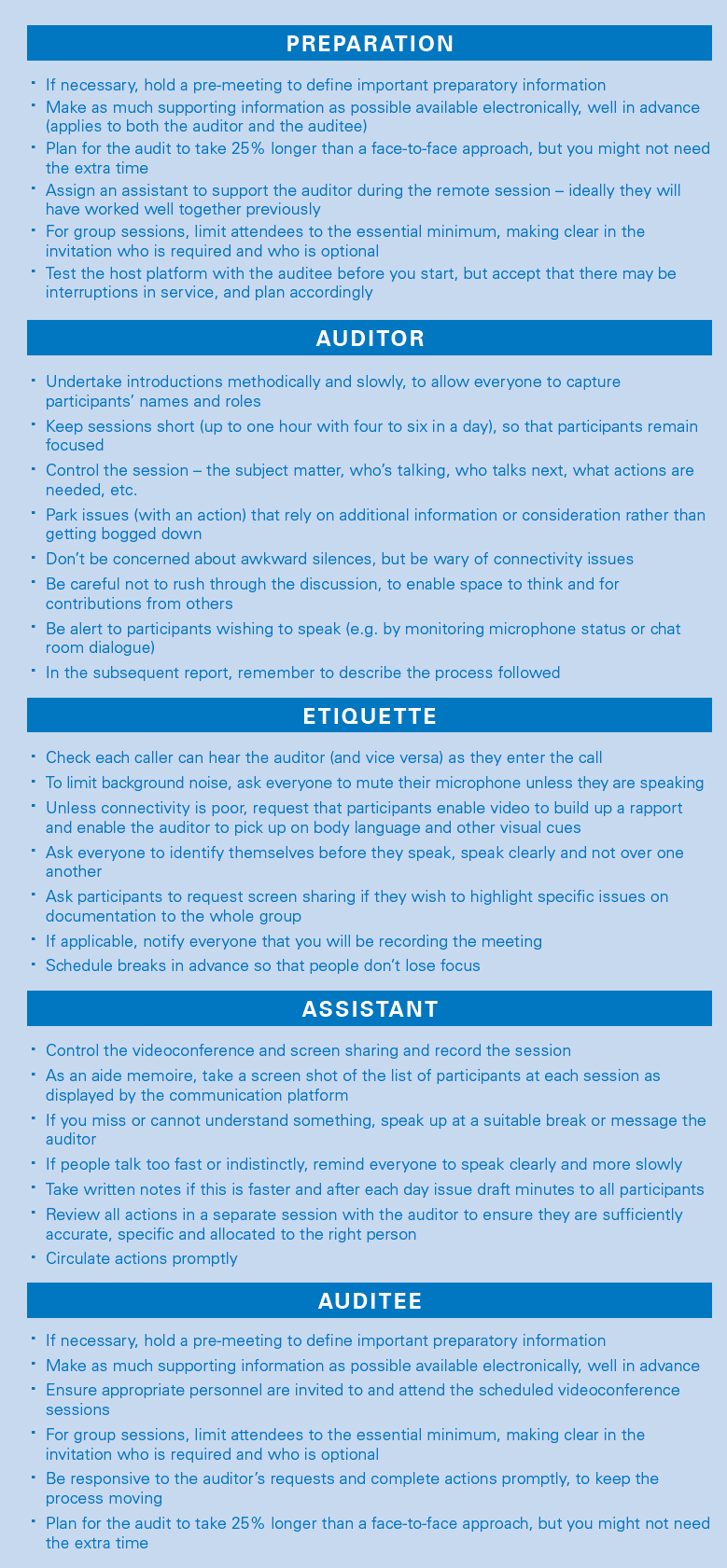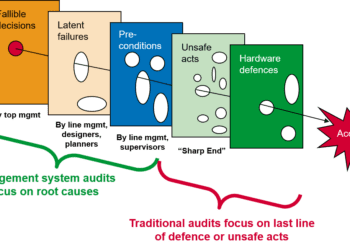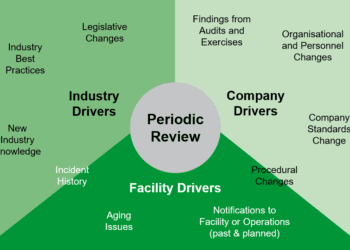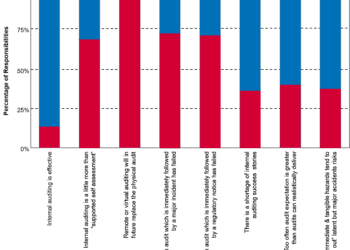Remote Control – Good practice for safety-related virtual audits
With companies grappling with how to achieve sustainability goals and reduce their overall carbon footprint, we look at how remote audits can be conducted effectively and the advantages this can bring.

DEFAULT SETTINGS
Following the changes to our working lives and the lessons learned from social distancing and travel restrictions during the coronavirus pandemic, it has become clear that many tasks can, with a bit of thought, be conducted effectively and efficiently in a virtual environment.
With an increasing focus and desire to achieve sustainability goals and reduce carbon footprints, remote audits can play a part in reducing the need for unnecessary travel, while still delivering an accurate and complete outcome.
So, how can a remote audit be conducted effectively? In order to answer this question, it is worth reflecting on the factors that have made face-to-face audits the default option, despite the presence of ever-improving digital communication tools.
MISSING PIECES?
A major benefit of undertaking audits on-site is that it allows the auditor to see instances of behaviours – both good and bad – and to witness the way people interact with each other and perform their work. In this respect, the on-site observations made by auditors play an important part. When considering a remote audit, the absence of this first-hand interaction is one of the main challenges that must be managed, with the auditor relying on testimonial evidence from the auditees instead of their own, direct experiences. This is where experienced auditors, particularly those who have worked at similar facilities, will add significant value to the remote audit process – building mutual trust with the site team to work towards a common goal.
VIRTUAL REALITY
Irrespective of the subject matter, an audit typically involves:
- Gathering facts and reviewing relevant information; and
- Verifying that the design and effectiveness of a system, programme or procedure is compliant with set standards and expectations.
Usually, these tasks can be achieved through a three-pronged approach – review, verification and interview – and remote audits are no different.
The key to a successful remote audit is preparation, meaning that greater emphasis should be placed on gathering and reviewing information as part of the pre-audit activities, prior to proceeding to interviews with personnel. Pre-audit activities include reviewing relevant procedures, examples of work undertaken, previous non-conformities and corrective actions taken for previously identified deficiencies.
Whilst all these issues can be managed remotely, care must be taken to ensure that adequate, relevant information is shared with the auditors in a timely manner. This will require greater co-operation from the auditee, as they cannot simply point the auditor to a filing cabinet or grant them access to a secure network drive.
IN PRACTICE
If a significant amount of detail needs to be covered during videoconferences, ensure that regular breaks are taken and don’t be afraid to split the session over multiple days, to avoid losing people’s focus. The auditor may find it useful to have an assistant to take notes and record actions as they arise. These actions should be diligently communicated and tracked to completion.
Conducting site inspections remotely is more challenging, but can be achieved through a variety of means, such as live online broadcasts or pre-recorded videos, if the risks to the personnel recording the video can be safely managed.
The final step in the remote audit process is to interview relevant personnel from all levels of the organisation via videoconference, again to verify that systems are in place and are being adhered to. These calls allow the auditors to gather information about understanding, compliance and training related to the area being audited.
If necessary, a physical follow-up
can be recommended. This judgement should be made using the results of the audit and the main risks associated with the topic, e.g. focusing on specific safety-critical items or processes.
Following the completion of an audit, a review of the remote auditing process is recommended, in order to identify any shortcomings and opportunities for improvement.
IS IT WORTH IT?
Remote audits are a practical solution without the time, cost and carbon emissions associated with travel. A carefully considered approach, taking account of the particular circumstances of the auditee, will ensure that there is no impact on the quality of the outcomes for the majority of the process. Where aspects of the audit may be compromised, for example due to the absence of an on-site inspection, don’t be afraid to recommend a site visit at a later date to verify the situation first-hand.
Advantages include:
- Uninterrupted surveillance programmes to meet compliance requirements.
- Continued identification of potential safety issues.
- Access to a broader range of expertise on both sides of the table, as geographical and timebased restrictions are more flexible.
- Reduced travel time, emissions and expenses.
- Flexibility of approach, which can be tailored to different companies, technologies and subject matters.
If there is a reluctance to conduct a remote audit, it is worth considering that even if the full effectiveness of a physical audit is not achieved, it will be considerably more effective than doing nothing. Tips for successfully conducting virtual audits are shown in Table 1.

Table 1 – Tips for successful remote audits
CONCLUSION
The disruption to normal working practices caused by the coronavirus pandemic prompted auditors to innovate and learn how to successfully complete audits remotely.
With careful planning, these lessons learned can be used to help us to reduce carbon emissions and achieve our sustainability goals, while still meeting audit objectives without compromising on quality and accuracy.
This article first appeared in RISKworld 42, issued November 2022.








